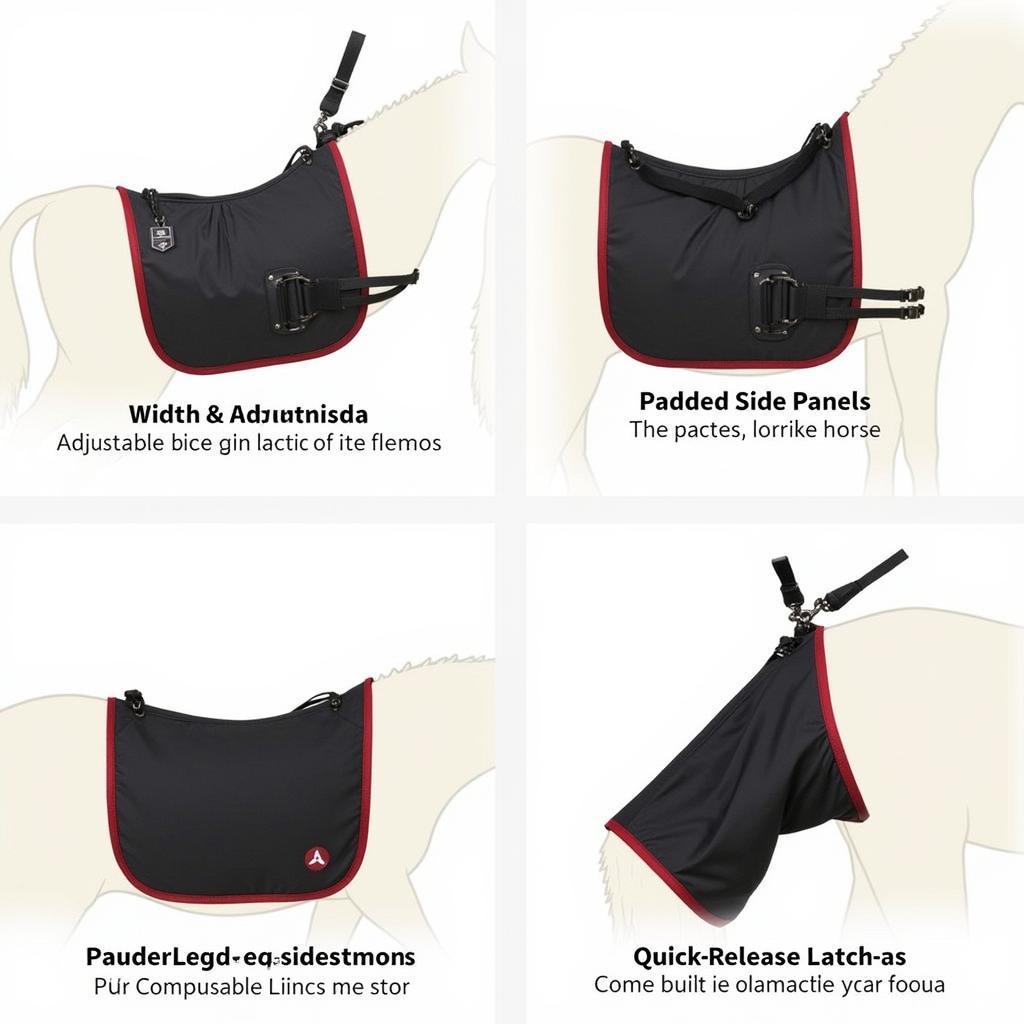Horse Stocks Dimensions are a crucial aspect of equine care and management. Understanding the correct sizing and construction of horse stocks is essential for ensuring both the safety and comfort of the horse during various procedures, from routine veterinary checks to farrier work. Properly designed stocks can minimize stress for the horse and facilitate easier handling, leading to a more positive experience for both the animal and the handler.
What are Horse Stocks and Why are Dimensions Important?
Horse stocks, also known as standing stalls, are enclosed structures designed to restrain horses safely during medical treatments, hoof care, grooming, and other procedures. The dimensions of these stocks are critical for several reasons. A stock that is too small can restrict the horse’s movement, causing discomfort and anxiety, while one that is too large can allow the horse to move excessively, potentially leading to injury. Finding the right balance is key to effective and humane restraint.
Key Factors Influencing Horse Stocks Dimensions
Several factors contribute to determining the appropriate dimensions for horse stocks:
- Breed and Size of the Horse: Different breeds vary significantly in size, from miniature horses to large draft breeds. Stocks must be tailored to accommodate the specific dimensions of the horse being restrained.
- Purpose of the Stocks: Stocks used for simple grooming might have different dimensional requirements than those used for veterinary procedures requiring more restrictive confinement.
- Material and Construction: The materials used to build the stocks can influence the overall dimensions and stability of the structure. Sturdy materials like steel or treated lumber are essential for safety and durability.
Standard Horse Stock Dimensions: A General Guideline
While custom-built stocks are often preferred to ensure a perfect fit, some general guidelines can help determine appropriate dimensions. These measurements are approximate and should be adjusted based on the individual horse’s size and the specific needs of the facility:
- Width: Typically ranges from 28 inches to 36 inches. This should allow enough space for the horse to stand comfortably without feeling cramped, but not so much space that they can turn around.
- Length: Usually between 6 feet and 8 feet. The length should provide enough room for the horse to stand fully extended without feeling confined while still preventing excessive movement.
- Height: Varies depending on the horse’s height, but generally ranges from 6 feet to 8 feet. The height should be sufficient to prevent the horse from jumping out while still allowing adequate ventilation and visibility.
Customizing Horse Stock Dimensions for Optimal Fit
“A well-fitted stock is like a tailored suit for a horse,” says Dr. Emily Carter, DVM, equine veterinarian and specialist in equine behavior. “It needs to be snug enough to provide security without restricting natural movement or causing undue stress.”
 Custom-Designed Horse Stocks for Optimal Fit and Safety
Custom-Designed Horse Stocks for Optimal Fit and Safety
Ensuring Safety and Comfort in Horse Stocks
Beyond dimensions, several other factors contribute to the safety and comfort of horses in stocks:
- Flooring: Non-slip flooring is essential to prevent slips and falls. Rubber mats or textured concrete provide good traction and cushioning.
- Ventilation: Adequate ventilation is crucial, especially in warmer climates. Open sides or strategically placed vents can help maintain airflow.
- Lighting: Proper lighting can reduce anxiety and make it easier for handlers to work with the horse.
“Remember, the goal is to create a positive experience for the horse,” emphasizes John Miller, a certified farrier with over 20 years of experience. “A calm and comfortable horse is easier to work with and less likely to injure itself or the handler.”
Conclusion
Understanding and implementing appropriate horse stocks dimensions is crucial for ensuring the safety, comfort, and well-being of horses during various procedures. By considering the factors discussed above and prioritizing both functionality and humane treatment, owners and handlers can create a positive experience for both themselves and their equine companions. Properly designed and utilized horse stocks contribute significantly to effective equine management.
FAQ
- What are the ideal horse stock dimensions for a Quarter Horse?
- How do I measure my horse to determine the right stock size?
- What materials are best for constructing horse stocks?
- Are there portable horse stock options available?
- What safety features should I look for in horse stocks?
- How can I make my horse more comfortable in stocks?
- Where can I purchase or have custom horse stocks built?
Need assistance with your horse stock needs? Contact us! Phone: 0772127271, Email: [email protected] Or visit us at: QGM2+WX2, Vị Trung, Vị Thuỷ, Hậu Giang, Việt Nam. We have a 24/7 customer service team.